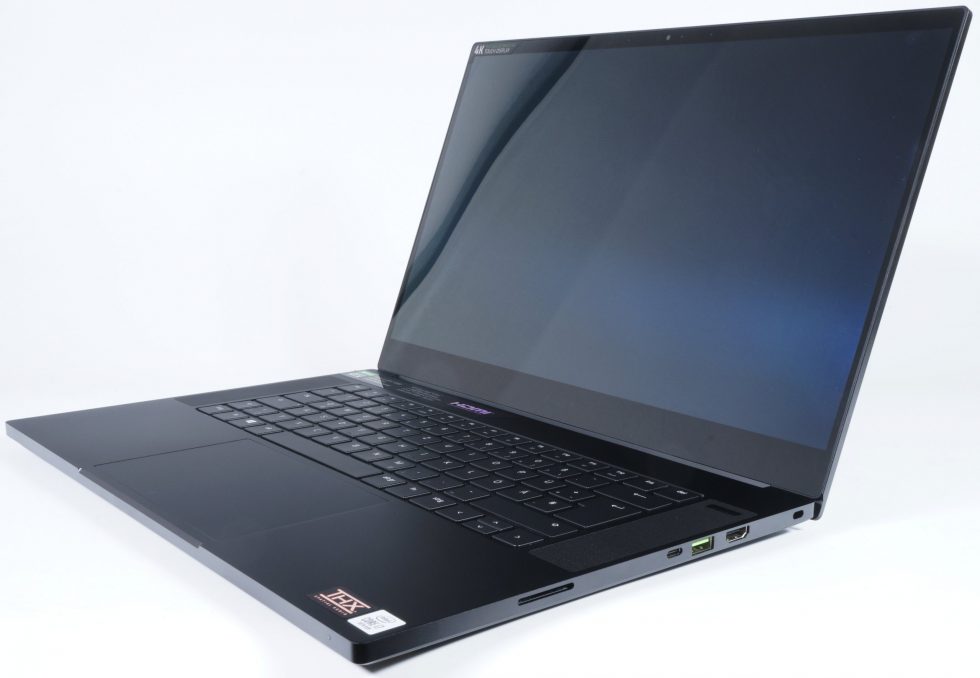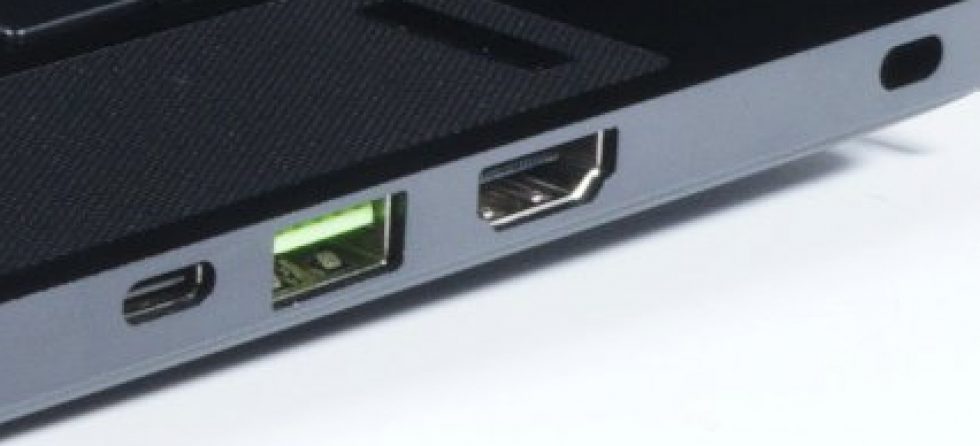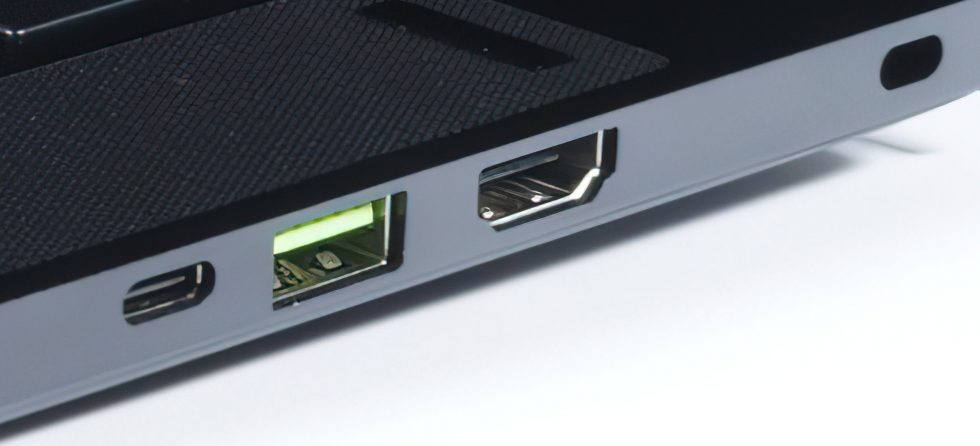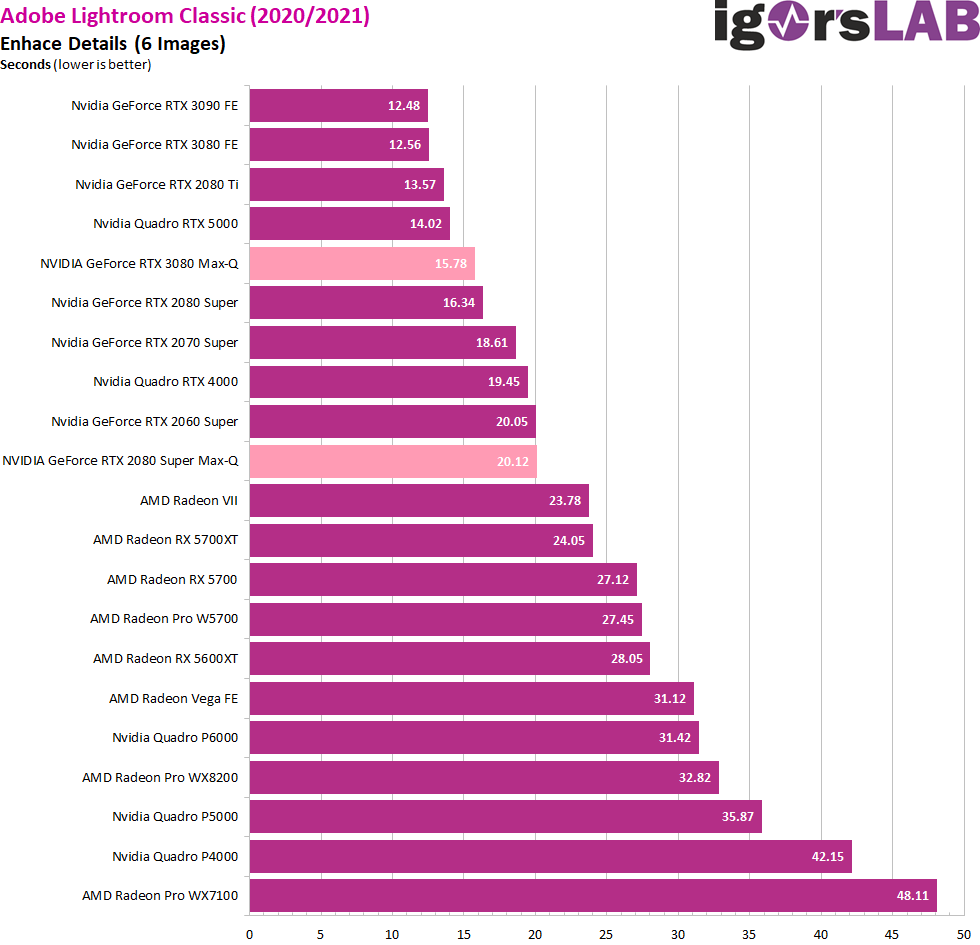First, let’s look at the source material. To do this, I intentionally underexposed the photo by having only the ceiling light on, but not all the photo lights. The result is completely dark and the details are not really visible. Is there any way to salvage such a photographic blunder? Yes, you can! Let me show you.
Exposure and interpolation
Who doesn’t know it? Adobe Photoshop Lightroom Classic CC is quite a popular image editing and digital asset management tool for photographers to significantly improve the quality of their images when using RAW formats by changing properties such as white point, exposure, color and hue. While Adobe Lightroom uses basic GPU acceleration when editing and displaying images in the viewport, the latest version of Lightroom now also uses GPU-accelerated AI to improve detail. The NVIDIA GeForce RTX 3080 Super Max-Q in the notebook can also be used quite well for this. First I used Adobe Lightroom Classic to correct the exposure of the RAW file.
Using the Sensei AI platform, Adobe engineers trained a neural network to demosaic RAW images with a focus on the problem area of RAW file interpolation. The detail enhancement feature uses the RTX tensor cores to process RAW files via the neural network (on GPUs without tensor cores, this feature uses normal GPU computation). The result is the ability to extract more image detail from the original RAW file than is possible with the traditional interpolation method. Let’s see the result:
Image enhancement (AI Denoiser)
This is where Topaz comes in. With Denoise Ai and Sharpen AI, an original can be effectively “decrumbed” and sharpened, regardless of whether color noise (see image above) or blurring interferes with the quality of the image. You can do it in the stand-alone programs, or you can do it in Adobe Photoshop 2021 like I did, where these programs can also be used as plugins. Sure, you have to be careful with the features and not everything lends itself equally well to these AI-based features, but the algorithms are really getting better and better.
AI-based upscaling
Let’s take one of the normal product images and scale it up to six times! As a cutout I choose the side edge area with the USB ports
The relatively soft resampling with Adobe Photoshop 2021 already works quite well, but you can see, cropped out 1:1 as a section, the individual cubic image elements that are softened, but still recognizable.
The AI-based upscaling in Topaz Gigapixel AI solves this much more elegantly, but you have to be careful with the settings not to “add” too much. The combination of cleanup and sharpening can be adjusted in a fairly balanced way, so it looks much better than simple resampling.
The GPU-based implementation works up to 10 times faster than would be possible with the Intel CPU. The image with the almost 16000 pixels width needs almost 3 minutes on the CPU, with the GPU it is only a few seconds. Since the program was only newly purchased by me, the comparison values to the RTX 2080 Max-Q are unfortunately missing, so I have once dispensed with the bar graphs. However, the Tensor cores work surprisingly fast and times is only about 25% behind an external RTX 3080.
You can also run and benchmark the AI-based detail enhancement in Adobe Lightroom Classic with multiple images in a catalog. This is exactly what I repeated with the new notebook. The mobile RTX 3080 is significantly faster at 95 watts TDP than the older 2080 Super at 115 watts TDP.








































21 Antworten
Kommentar
Lade neue Kommentare
1
Mitglied
Veteran
Urgestein
Urgestein
Urgestein
Urgestein
Urgestein
Mitglied
Urgestein
Urgestein
Urgestein
Urgestein
Urgestein
Mitglied
Urgestein
1
Urgestein
Alle Kommentare lesen unter igor´sLAB Community →